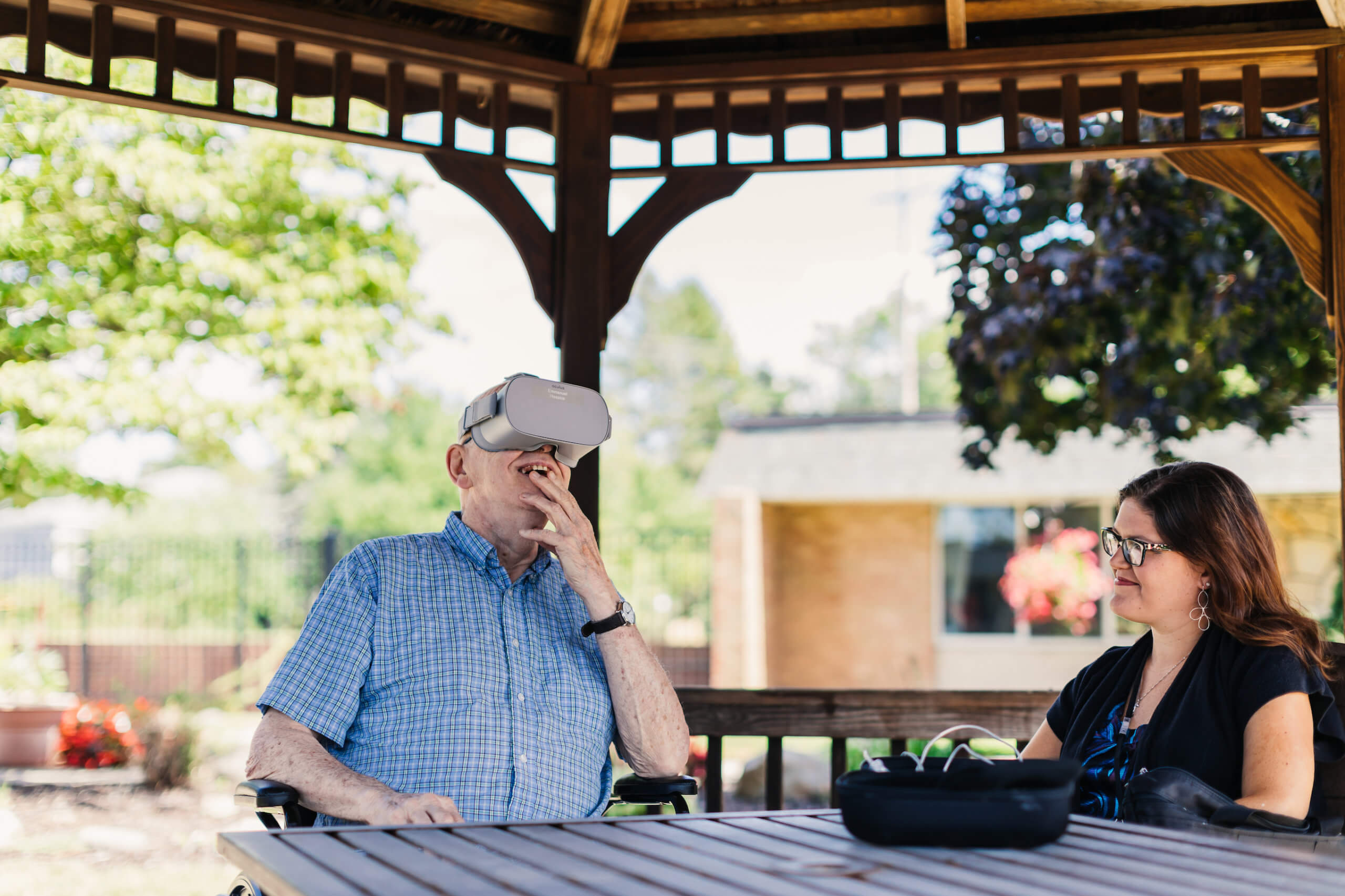One patient went across the country to visit a favorite lake in California. Another traveled to Romania to take in views of the village where she’d been born. And yet a third fulfilled a dream of embarking on a hot air balloon ride.
In all three instances, none of these patients left the comfort of their own home. They were transported virtually, thanks to an innovative partnership between Emmanuel Hospice and The Flight To Remember Foundation, which uses drone technology to allow patients to tour a
meaningful location they’re unable to visit physically.
“Part of our mission is to keep asking ourselves how we can expand the boundaries of care and build bigger and better tools,” says Heather Duffy, Emmanuel’s director of fund development. “In every instance, we want to be able to answer ‘yes’ to a patient wondering if we can do something to help them live their best life.”
Since its inception, Emmanuel has constantly strived to integrate technology into its menu of complementary therapies. But the issue was especially driven home during the ongoing pandemic, which prompted caregivers to seek alternative ways of interacting with and providing services to some patients.
“It became especially tricky with visiting restrictions,” observes Katie VanRyn, a social worker for Emmanuel. “But in recognizing the importance of connecting with our staff and with a patient’s loved ones, it became vital for us to pivot and adapt.”
Fueled by a passion to serve, Emmanuel sought and acquired funding to purchase iPads, Oculus virtual reality headsets and other technology that allowed patients to interact remotely.
“Even though a patient might enjoy my visit with them,” VanRyn says. “I know they’d rather be with family and friends, and when I can make those connections, that’s very fulfilling for us all.”
Perhaps the most innovative technological advance is via The Flight to Remember Foundation, founded in Ohio in 2015 and dedicated to providing “priceless moments of happiness during life’s most trying times.”
The nonprofit foundation partners with a network of volunteer drone pilots worldwide who honor requests to create videos of meaningful places a patient is unable to visit, but yearns to see one more time. The pilots use their small, unmanned craft to fly to a height of 400 feet to take in the vistas, then create a high-quality video which is then digitally transferred to the hospice to be shared with the patient. The patient is given the option of preserving the video in whatever format best suits them – a DVD, flash drive or via a digital link, for instance.
“Through virtual reality and the flights to remember, we’re providing something that would not otherwise be possible, usually due to a physical limitation,” Duffy says. “From the comfort of their home, they can go on a roller-coaster ride, take a hike through the mountains, ride a gondola – anything that brings comfort fulfillment, connection or joyful moments to our patients.
“It’s our way of offering more love, more care and more peace to more people in our community who need it most.”


